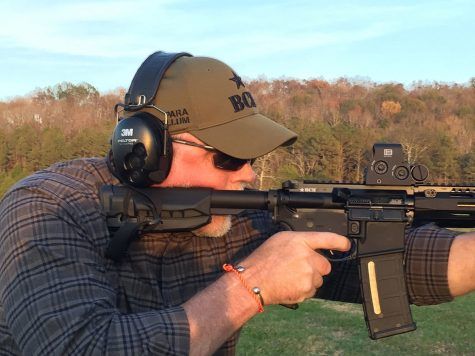In the video above, Chad Albrecht from School of the American Rifle highlights a wide variety of AR-15 Reaction-style rods. Look for more videos from ARBuildJunkie in collaboration with SOTAR in the very near future.
In addtion to this video, we asked to Chad to explain to our readers the purpose behind a reaction rod, and why it’s a tool an AR builder should own.
Chad Albrect, School of the American Rifle – The AR-15 reaction rod became popular about five years ago. They are a more universal alternative for working on an AR-15 upper receiver.
In the past, your tool options were clamshells to go around the receiver, or you had different types of fixtures that would either go up into the lower, or use the front and rear takedown pins to hold everything together.
So again, you could use clamshells to go around your upper, or you could use something that goes in the receiver, or uses the front and rear takedown pins to hold it in place while you are trying to install a barrel, or remove a barrel, or put your muzzle device on…anything where you’re cranking things down.
The problem with the clamshell versus the AR-15 reaction rod is that a clamshell is only cut for certain styles of uppers. When companies started making billet receivers with beefier upper profiles, or maybe they had a different shell deflector…or really, any type of non-standard contour, the clamshell would not work.
On the products that used the front and rear takedown pins, if you put a lot of force on your barrel nut trying to remove it or take it off, you can break off the lugs, or you can twist the upper receiver from the force that you’re applying to the barrel nut or muzzle device…so they were less than optimal.
AR-15 Reaction Rod Benefits
With AR-15 reaction rods, they simply slide into an upper, you lock them into a vice, and they go into the barrel extension. So, unless you have an upper that has a bore that is too small, they are pretty much universal no matter what you are doing, no matter what upper you pick, no matter what lower you pick. That’s the reason for its development and its popularity.
Before the development of the AR-15 reaction rod, if you look at a military manual, they used barrel blocks that would grab the barrel, and then they would try to do their muzzle device work, or their barrel nut work. The problem with those is that they have to fit the exact contour of the barrel you’re using or they can slip and scratch the barrel…so, it takes a little bit more skill to use them, versus something like a barrel vice or barrel clamps.
###







Is it safe to use a reaction rod to install/remove a muzzle device? There’s a significant amount of people online that think that this may risk separating the barrel extension from the barrel. These people argue that clamping the barrel is the only way. I’ve used rods for this work in the past but maybe this was in error…
what is the rail on that upper ?